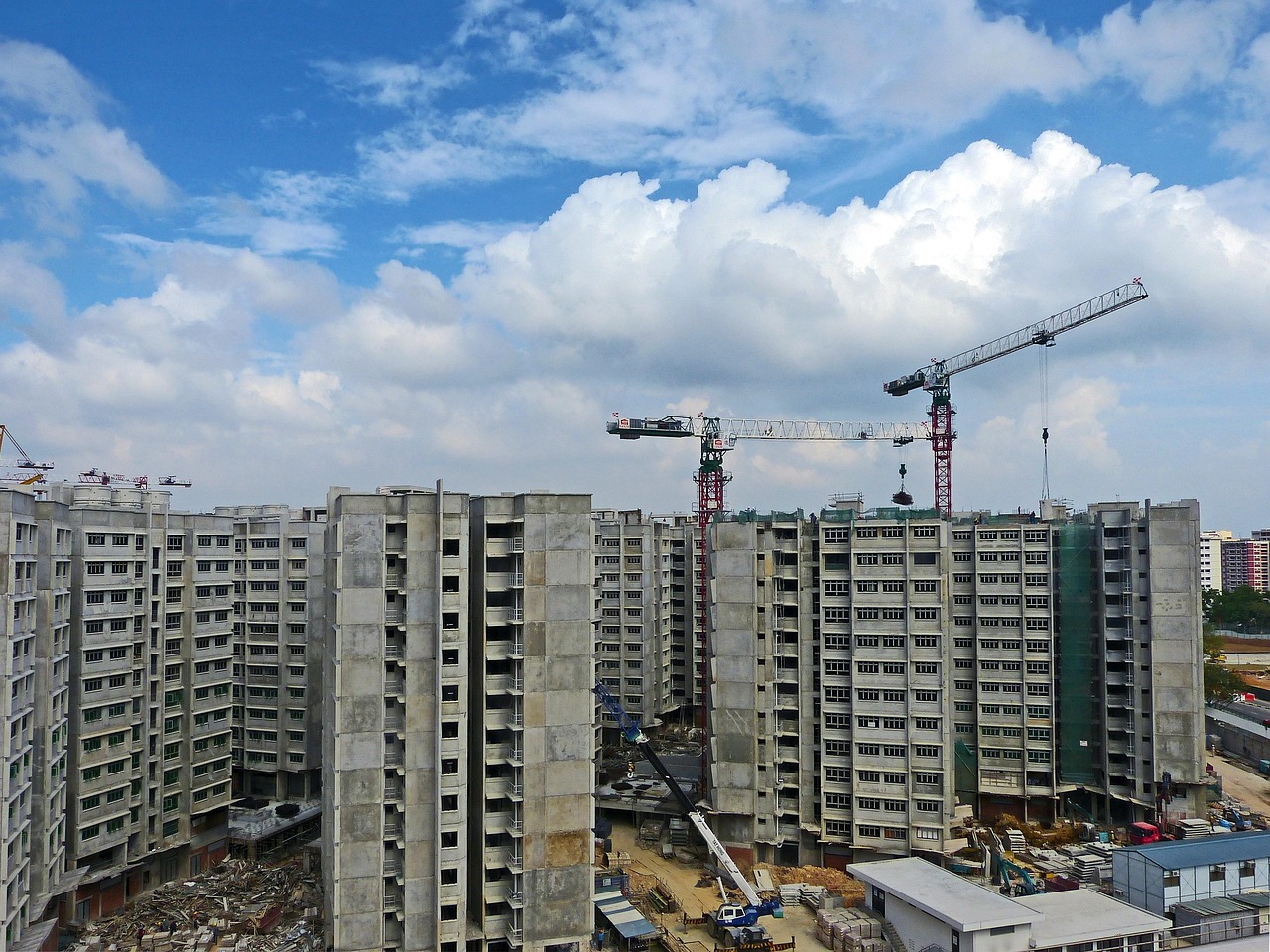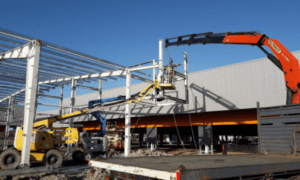In the construction industry, managing expenses while maximizing profit is a balancing act that requires precision and foresight. It’s not just about getting the job done; it’s about doing it efficiently and within budget. With rising costs and fluctuating market conditions, it has become increasingly vital for contractors and project managers to implement effective strategies to control expenses. In this article, we’ll explore various methods to achieve financial success in construction projects, focusing on the use of advanced tools and techniques.
Understanding the Importance of Cost Control
Effective cost control is the backbone of any successful construction project. It involves monitoring expenses throughout the project lifecycle to ensure that budgets are adhered to, and profits are protected. A well-structured cost control process provides several advantages:
- Financial Stability: Keeping expenses in check prevents cash flow issues that can derail a project.
- Profitability: By managing costs effectively, contractors can ensure that their profit margins remain intact.
- Client Satisfaction: Delivering a project within budget fosters trust and satisfaction among clients, leading to repeat business and referrals.
- Risk Management: Identifying potential financial risks early allows teams to implement mitigation strategies before they escalate.
Understanding these benefits is crucial for any construction professional seeking to enhance their financial performance.
Comprehensive Pre-Construction Planning
The foundation of effective cost control begins long before the first shovel hits the ground. Comprehensive pre-construction planning allows teams to identify potential challenges and expenses early on. Here’s how to approach it:
- Detailed Cost Estimates: Develop thorough estimates that include all possible costs, such as materials, labor, permits, and equipment. Utilize historical data from previous projects to inform these estimates.
- Scope Definition: Clearly define the project scope to avoid scope creep, which can lead to unexpected costs. A well-defined scope provides a solid framework for project execution.
- Market Analysis: Stay informed about current market conditions and pricing trends. This knowledge will help in making informed decisions about suppliers and subcontractors.
- Contingency Planning: Allocate a portion of the budget for unforeseen expenses. This contingency fund acts as a safety net against unexpected challenges.
Accurate Expense Tracking
Once the project is underway, accurate tracking of expenses is essential. This involves monitoring all costs in real-time to ensure that spending aligns with the budget. Here are some strategies to enhance expense tracking:
- Utilize Technology: Implement construction job costing software like Premier that allows for real-time tracking of expenses. This software can integrate with accounting systems to provide a comprehensive view of financial performance.
- Regular Reporting: Generate regular financial reports that compare actual spending against the budget. This practice helps identify discrepancies early, allowing for timely corrective actions.
- Team Collaboration: Foster a culture of communication among team members. Encourage them to report expenses as they arise, ensuring that all costs are captured accurately.
- Document Management: Maintain organized records of all financial transactions, including invoices and receipts. This documentation is crucial for audits and financial reviews.
The Role of Construction Job Costing Software
In today’s digital age, technology plays a pivotal role in managing construction expenses. Construction job costing software can streamline processes and enhance accuracy. Here’s how:
- Real-Time Data Access: Software solutions provide access to real-time data, allowing project managers to make informed decisions quickly.
- Automated Reporting: Generate automated financial reports that highlight spending trends and potential issues, reducing the burden of manual reporting.
- Integration Capabilities: Many software solutions can integrate with existing accounting systems, providing a seamless flow of information across departments.
- User-Friendly Interfaces: Modern software is designed with user experience in mind, making it easier for teams to adopt and utilize effectively.
Monitoring Cash Flow
Cash flow is the lifeblood of any construction project. Monitoring cash flow involves tracking the inflow and outflow of money to ensure that sufficient funds are available to cover expenses. Here are some key strategies:
- Cash Flow Forecasting: Create forecasts that project future cash inflows and outflows based on current contracts and expected payments. This foresight can help identify potential shortfalls.
- Timely Invoicing: Implement efficient billing practices to ensure that invoices are sent out promptly. Consider offering discounts for early payments to encourage clients to settle their accounts quickly.
- Payment Terms Negotiation: Negotiate favorable payment terms with clients and suppliers. This can help improve cash flow and reduce financial strain.
- Backup Plans: Develop contingency plans for managing cash flow shortages, such as securing lines of credit or establishing relationships with alternative financing sources.
Identifying Value Engineering Opportunities
Value engineering is a systematic approach to improving project costs without sacrificing quality. By evaluating materials, design options, and construction methods, teams can identify areas for potential savings. Here’s how to implement value engineering:
- Collaborative Analysis: Engage project stakeholders, including architects and engineers, in collaborative sessions to explore alternative solutions that meet project requirements at a lower cost.
- Material Evaluation: Assess different materials for their cost-effectiveness and performance. Sometimes, a less expensive material can provide the same functionality as a premium option.
- Design Optimization: Revisit design plans to identify potential efficiencies. Simplifying designs can often lead to significant cost savings in both materials and labor.
- Lifecycle Cost Assessment: Consider the long-term costs associated with materials and systems, including maintenance and energy efficiency, rather than just upfront costs.
Limiting Change Orders
Change orders can significantly impact project budgets and timelines if not managed properly. Here’s how to minimize their occurrence:
- Clear Communication: Establish clear communication channels with clients to ensure that expectations are aligned from the start. Discuss potential changes during the planning phase to avoid misunderstandings later.
- Thorough Documentation: Document all project specifications and requirements upfront. This documentation serves as a reference point for both the contractor and the client.
- Change Order Management Systems: Utilize technology to manage change orders efficiently. Implement systems that track requests, approvals, and associated costs to streamline the process.
- Risk Assessment: Evaluate the potential impact of proposed changes on the budget and timeline before approval. This assessment helps clients understand the implications of their requests.
Enhancing Team Collaboration
Collaboration among team members is crucial for effective cost control. Here are some strategies to enhance teamwork:
- Regular Meetings: Schedule regular project meetings to discuss progress, challenges, and financial performance. This practice keeps everyone informed and aligned.
- Shared Goals: Establish shared financial goals for the team, encouraging collective responsibility for managing expenses.
- Open Feedback Channels: Create an environment where team members feel comfortable providing feedback on processes and suggesting improvements.
- Training and Development: Invest in training programs that enhance team members’ skills in cost management and financial awareness.
Utilizing Advanced Technology
As the construction industry evolves, embracing advanced technology becomes essential for maintaining competitive advantage. Here’s how technology can aid in expense control:
- Building Information Modeling (BIM): BIM allows for enhanced visualization and coordination of construction projects, reducing the likelihood of costly errors and rework.
- Mobile Applications: Implement mobile apps that enable field workers to report expenses and track materials in real time, improving data accuracy and accessibility.
- Drones and Robotics: Utilize drones for site surveys and inspections, reducing time and labor costs associated with traditional methods.
- Artificial Intelligence: Leverage AI for predictive analytics that identify potential cost overruns and suggest proactive measures.
Continzous Improvement and Learning
The construction industry is dynamic, and continuous improvement is key to staying ahead. Here are some strategies for fostering a culture of learning:
- Post-Project Reviews: Conduct thorough reviews of completed projects to identify lessons learned and areas for improvement in future endeavors.
- Professional Development: Encourage team members to pursue ongoing education and certifications in financial management and project controls.
- Industry Networking: Engage with industry peers and organizations to share insights and best practices related to cost control.
- Feedback Loops: Implement feedback mechanisms that allow team members to share their experiences and suggestions for improving processes.
Conclusion
Controlling expenses and maximizing profit in construction projects is a multifaceted challenge that requires careful planning, effective communication, and the right technology. By leveraging advanced construction job costing software and implementing best practices in expense management, project teams can enhance their financial performance and deliver successful projects. With a proactive approach to cost control, you can navigate the complexities of the construction industry and build a foundation for long-term success.

































